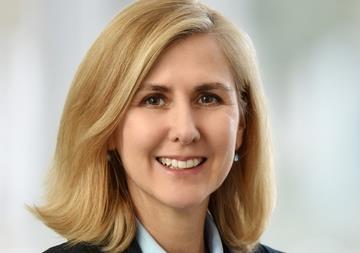The complexity of pension investments makes communication very important. Does the Dutch uniform pension statement offer a solution? Rachel Fixsen reports
Never has there been more pressure on pension funds to find the best way of communicating with their participants.
Not only are legislators and regulators demanding that schemes equip members with the facts they need, but with complex investments, buyouts and funding concerns, scheme members arguably need more information than before.
In the Netherlands pension funds are largely improving the way they interact with members, according to Monique Driessen, senior consultant at Watson Wyatt’s human capital group.
“Some do communicate well and some don’t,” she finds. “In the past some pension funds sent technical information to participants, and in my view that was seen as complex and not interesting - nobody really read it.”
But the law is now forcing schemes to shape up. The Dutch Pension Act, which came in at the beginning of last year, includes communication requirements, which took effect at the beginning of January 2008.
“Due to this new law, things are changing,” says Driessen. “They have been doing so in the last few years, but now it really is going to change, since they are obliged to communicate clearly and in a timely manner.”
Regarding communications with participants, the Dutch association of industry-wide pension funds (VB) says the most important part under the new law is that funds must send a letter of welcome to new participants. This should include information about the pension arrangement, the indexation, the total possible accrual of pension rights and the financial position of the pension fund. As well as this, funds must provide an annual pension statement, or a five-year statement for people with deferred rights.
“Some of the large industry-wide funds - for example, Metalektro (PME) - are communicating very well with their participants,” says Driessen (see bottom). “They are using advertising, and targeting certain groups within the population, for example, women or young people, because all these people need different information.
While larger pension funds typically have in-house staff to devise and implement their communications plan, consultancies such as Watson Wyatt also offer this service, Driessen points out. “It is especially a problem for smaller funds, and they would hire an agency.”
Leny van der Heiden-Aantjes, the VB’s acting director, says it is extremely important for pension schemes to communicate well. “If you don’t communicate in a proper way with the participants you are liable for any damage they may suffer,” she says. “Awareness of financial subjects and especially on pensions is very low.
“It is important that people make the right choices. Therefore good communication is a necessity. In the Netherlands, for example, people can choose a higher old age pension for themselves in exchange for forgoing their rights for a pension for their surviving relatives if they die.”
Van der Heiden-Aantjes says the uniform pension statement, or UPO, is an example of the pension sector taking their responsibility very seriously. “All pension funds and pension providers use this statement. The uniformity makes possible that people can compare and add up their pension rights. In this way the UPO helps people with their financial planning.”
In Ireland last autumn, in his annual report, the Pensions Ombudsman Paul Kenny criticised some pension funds, saying a significant number of complaints were purely attributable to poor communication. Most often, he said, the nature of the scheme was not fully communicated to members, which then “built up all kinds of unrealisable expectations in their own minds”. The use of jargon was part of the problem, he said.
Jerry Moriarty, (pictured right) director of policy at the Irish Association of Pension Funds, acknowledges that there are very detailed legislative disclosure requirements that funds have to adhere to.
“However, there is a big difference between disclosure and communication,” he stresses. “Many funds, quite understandably, think that once they have complied with the disclosure requirements they have communicated. However the disclosure requirements do not necessarily lend themselves to good communication and are too detailed and prescriptive.
“It would be better if the legislation laid down the principles of communication and funds could then communicate these in a manner appropriate to their own fund,” he continues. “Because funds often approach communication from the starting point of complying with legislation, they often do not use language that members readily understand. Quite often the information that members receive will contain a lot of technical jargon and acronyms that are not explained. Most members do not understand pensions and all communications should take that into account and aim to allow them to increase their understanding.”
Face-to-face contact has a place too, Moriarty believes. “There is a lot of emphasis on written communication whereas it is more beneficial to members to have someone they can talk to about the fund and their options,” he says. “Many employers and funds arrange for this and it greatly raises awareness and appreciation of the fund.”
In the UK, according to the Pensions Regulator’s 2008 governance survey, 33% of trustees said that communication with members was “very good”, while 51% said it was “good” - which was about the same as the result in the previous year’s survey.
Amy Balchin, head of media relations at the Pensions Regulator, says: “It is important that trustees communicate well with members, and while our governance survey suggests that the majority of trustees feel they are keeping members well informed, we are aware that more guidance may be welcomed.
“We will later this year look at the issues around communicating with members, as part of our ongoing commitment to promote good governance.”
Communicating with members is a key part of running a pension scheme, says Colin Hartridge-Price, scheme secretary of the BT Pension Scheme. “It always has been,” he says. “But it is becoming more important and will become even more so with personal accounts, because people will have various options open to them.”
“Most is done in house either by the trustees or by BT, depending on what is involved,” he says. “If you’re communicating, you need to communicate with everyone and in a way that suits them. There are some workforces that like email, and others that prefer letters,” he says.
Hartridge-Price acknowledges that there is a cost involved in communications “This is more of a problem with defined contribution, because everyone has their own pot of money, and there isn’t a common fund for extra costs,” he says. “Cost has to be a consideration, but keeping members informed has to outweigh that cost.”
And as Mark Smith, senior consultant at Lane Clark & Peacock in London, points out, a pension is an expensive employee benefit so it is in a company’s own interest to make sure staff know about it. “There’s a lack of understanding of how expensive it is for the employer to continue supporting DB benefits,” he says.
On the other hand, Smith observes that some companies are holding on to their DB schemes. The retailer John Lewis, for example, has recently said it plans to give greater access to its DB scheme by cutting the amount of time new staff have to wait before joining the scheme from five years to three.
Communication is important here so that the benefit is properly appreciated, he says. “Probably the first time they understand how valuable the pension is, is when the point comes to change it,” Smith laments.
“The employer could be spending as much as 15% of their salary roll on their pension scheme and there would therefore be a desire for employee recognition of this spend,” says Damian Stancombe, head of employee benefits at Punter Southall Financial Management.
“Recent surveys show that up to three-quarters of companies that provide pension schemes do not survey their employees to find the level of appreciation or understanding of this valuable and costly benefit.”
A second reason why pension schemes need to communicate well with employees is that relatively few people in the UK contribute to a pension fund, he says. “Within certain sectors, pension scheme take-up rates can be as low as 15% due a combination of apathy and affordability. “It is also clear that there is a widespread misunderstanding and mistrust of company pension schemes as a savings vehicle for retirement and effective communication can only improve upon this,” he says.
Low take-up rates certainly suggest UK pension funds are not generally communicating well, Stancombe concludes. “There seems to be an over-reliance on literature and the written word, be it via booklets or the internet, as the sole means of communication,” he continues.
“In the UK workplace there are 1.2m dyslexics and one-third of the adults living in the UK have English as a second language; it is therefore crucial that new mediums of communication are employed such as face-to-face presentations or multimedia streams.”
Stancombe cites several reasons why communication is often inadequate. “Needless to say, any communication beyond a simple handbook will require an increased budget which may or may not be available to the employer. Even if this initial cost were to only equal a tiny percentage of the overall spend on pensions there is still the issue of time cost for the individual pulled away from their work to attend a pension presentation. “Issues such as the language barrier, transient workforce and indeed a cultural shift into a spend culture rather than a saving culture do not help attempts to communicate what is still perceived as a complicated issue.”
Pension scheme members clearly need to know when their scheme is undergoing a major change, such as a buyout (see box left). And when a pension scheme is being bought out, says Smith, the news can be very positive for scheme members. “If the members’ benefits are being insured in full with an insurance company, then the message can be a very strong one,” he says. “They can feel their pensions are in a very secure place.
“Generally, those schemes are quite mature, so the obligation to communicate often falls to the trustees and not the employer. For pensioners, it means a different payer, and there’s still a requirement to give a lot of comfort to the older people that things will continue in the same way.”
With the increasing use of alternative assets such as hedge funds and private equity in pension fund investment, do pension funds now face the additional challenge of explaining complex holdings to their members? And how much detail should participants be given about funding levels?
Smith feels that in these cases, less can be more. “People won’t have a very strong understanding of pension scheme investments and funding levels and they will look to the trustees as people who are looking after the money on their behalf,” he says.
“Generally, they’re going to be looking for a comforting statement from the trustees themselves rather than figures on the funding level. And that information can change very quickly - a funding statement prepared before Christmas would look very different from one prepared today.
“They’re looking for comfort from two sides - from the trustees on the one side and the government on the other; there is much more protection for scheme members than there used to be,” including the Financial Assistance Scheme for older schemes and the Pension Protection Fund, says Smith.
“Members need to know at a general level particularly where there are risks involved,” says Moriarty of the IAPF. “However the more detailed and complicated the information provided, the less likely it is to be read and understood. It is better in such situations to give members a high level understanding and offer to make further information available on request.”
Although industry standards and codes of practice can often be useful tools in bringing service providers into line, is it time for a European standard on pension fund communication? Monique Driessen is in favour.
“I think it would be a good idea, since there are certain aspects everyone has to know about their pension,” she says. “Of course you have different legislation, but the common aspects are risk and [benefit] expectation.”
But Stancombe believes it is too early for a standard to be established at European level. “At this moment in time, in our opinion it seems hard to agree on the idea of a Europe-wide communication strategy due to the huge differences in culture, tax and social benefits between each country.
“There may however, come a time for pan-European pension schemes and at that moment it would make sense that the communication of any such scheme is delivered via a Europe-wide strategy, especially as all European countries would be facing identical issues with regards to their aging populations.”
Buyouts
Buyouts have become more and more common in the UK in the last two years as sponsors seek to remove pensions liabilities from their balance sheets. Morgan Crucible recently agreed to a partial buyout of its two defined benefit schemes by Lucida, in a deal worth around £100m. In February, Paternoster - headed by former Prudential UK and European CEO Mark Wood - brought the total assets that it had secured to £1.6bn after agreeing to take on the pension scheme of independent music company Chrysalis.
“Clear communication from the pension scheme to the members throughout the process is important, so the changeover doesn’t come as a surprise to them,” says Kirsty Fitzpatrick, (pictured left)head of communications at Paternoster.
“Members won’t typically have a full understanding of how their existing benefits have been derived, so they might be a little bit nervous of what might happen,” she says. “They won’t necessarily be aware that transferring to an insurance environment is more secure than a corporate environment,” she says.
“In terms of the process, the trustees will write to their scheme members explaining what has happened, and very often we work with the trustees on that communication. If it’s going to be beneficial, then they also set up a face-to-face member briefing,” which might be held at the company’s premises, Fitzpatrick explains.
“Typically they want to know what they are going to get in terms of benefits; they want to be reassured about this. They also want to know if they need to do anything, and who they can talk to if they are concerned about something - and we make sure this is clearly communicated.”
And once the deal is completed, and a corporate pension scheme’s liabilities are in Paternoster’s hands, staying in touch with members becomes the insurers task if administration has been transferred to them.
“We’ve developed a whole suite of information which is tailored to members - both deferred members and pensioners. We explain what Paternoster is, what is happening to their pension, and for pensioners, we explain the new payslip they will receive. For deferred members, we give some useful links to other sources as well,” she says.
Case studies: Blue Sky Group
Erik Voorhoeve is manager of pension fund board services at Blue Sky Group, the pensions outsourcing group that grew out of the pension fund of Dutch airline KLM.
The group now provides pension administration, administrative processing, fiduciary investment management and communication services to 13 pension funds in the Netherlands.
“As of 2008 all pension funds have to provide an annual Uniform Pension Statement to their participants,” says Voorhoeve. “Blue Sky Group has developed a fixed format for this that is being offered to all its clients. The format can be tailored to specific pension scheme items and the corporate identity of each client.
“Blue Sky Group also offers its clients information meetings for specific target groups, pension scheme brochures and an online pension planner enabling participants to analyse their pension and calculate the consequences of certain pension choices. All communication products can be tailored to the client’s specific requirements,” he says.
PKA
Some pension outsourcing companies are developing standardised templates for reporting and communication, but outsourcers emphasise the importance of tailoring the information to the recipient.
Claus Skadhauge is head of communications at the Danish pensions collective PKA, which manages DKK114bn (€15.3bn) of assets for eight funds. He finds it natural for providers to seek standard solutions for any kind of member service - including reporting and communications.
“It is essential, if you want to create large-scale operations to keep down costs,” he says. “But it is necessary to create templates that allow the necessary variations to ensure that pension funds can keep their own standards and service level. “Any pension fund must ensure that the demands from their members are met within the standardised solution.”
In partnership with Paedagogernes Pensionskasse/PBU and Laerernes Pension, the eight pension PKA pension funds formed a new company, Forca, three years ago, to handle all their daily pensions operations.
PME
Although new Dutch legislation, which took effect this year, obliges pension funds to improve their communication with participants, PME, the industry-wide scheme for the metal and electro technical engineering sector, says this was not the trigger for it to up its game.
“We started a few years ago,” says Bram van Els, communications officer at the €21bn fund. “We feel very responsible for our members. We are a non commercial organisation so we are not making money out of this, but we feel a strong responsibility that our members should be aware of the situation.
“A lot of people think that if you work for 30 or 40 years, then you will get 70% of your last salary as a pension. But it’s not like that. There have been many changes in the system, and a few times in their life, everyone has to take some time to think about their financial future.”
“We did some campaigns which were targeted at specific groups in the population - young people, and women, for example,” says Van Els.
“More and more pension funds are starting to use advertising campaigns right now, for example, PGGM. We are also producing a segmented magazine, with different versions targeted at different age groups, and will start using this segmented approach at the end of this year.”












No comments yet